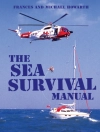The preceding decade has seen the production of many cancer at- lases. As with other techniques of descriptive epidemiology, these atlases have proved valuable in identifying areas for further re- sear~h employing the methods of analytical epidemiology. How- ever, the various cancer atlases produceq to date have failed to pro- vide a common format of presentation, which has limited their comparability and frustrated in a large measure any attempt to compare risks across national boundaries, boundaries which in terms of environmental exposures may have little meaning. In this volume, many features of cancer atlases are presented and there are discussions on the areas where moves towards standardization could greatly increase the utility of the finished product. In contrast to topographic maps, i. e., representations of natural and man-made features on the surface of the earth, thematic maps concentrate on displaying the geographical occurrence and varia- tion of a single phenomenon – the "theme" of the map. The link between thematic and base mapping is rather strong as the themat- ic information to be depicted is of greater value if displayed on an accurate base map. Further, the thematic map generally uses statis- tical data which are frequently related to internal administrative boundaries for enumeration. The major reason for constructing a thematic map is to discover the spatial structure of the theme of the map and to then relate the structure to some aspects of the under- lying environment.
Peter Boyle & Ekkehard Grundmann
Cancer Mapping [PDF ebook]
Cancer Mapping [PDF ebook]
¡Compre este libro electrónico y obtenga 1 más GRATIS!
Idioma Inglés ● Formato PDF ● ISBN 9783642836510 ● Editor Peter Boyle & Ekkehard Grundmann ● Editorial Springer Berlin Heidelberg ● Publicado 2012 ● Descargable 3 veces ● Divisa EUR ● ID 6334719 ● Protección de copia Adobe DRM
Requiere lector de ebook con capacidad DRM












